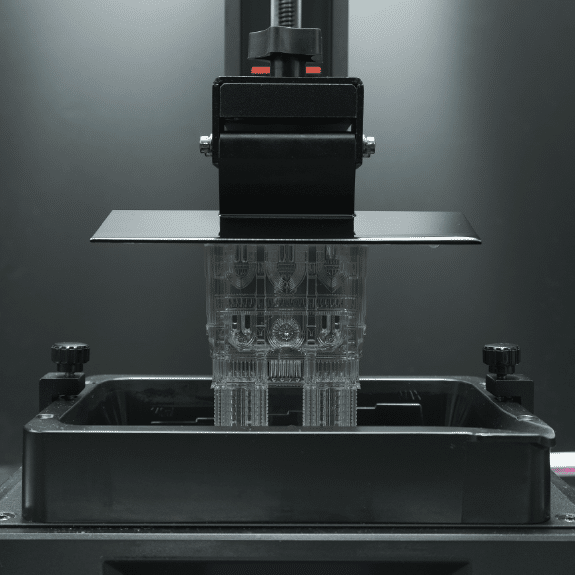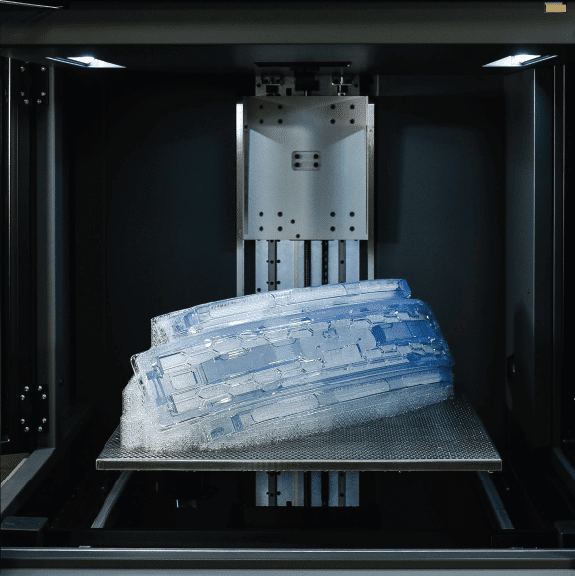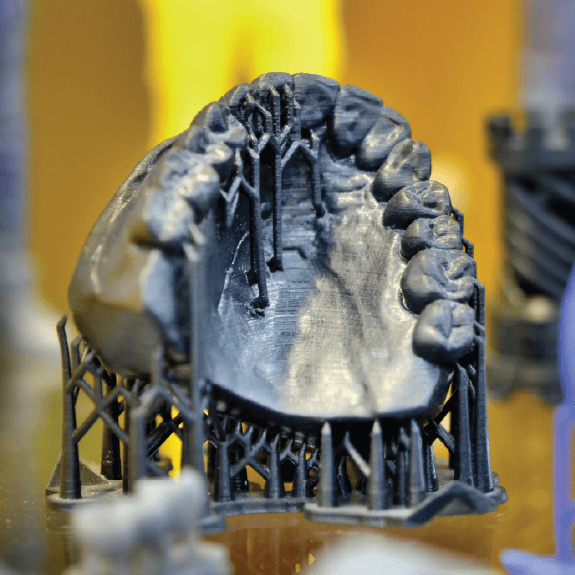SLA 3D Printing Services
The preferred method of prototyping for medium or large sized prototypes and models where cosmetics are a priority



High-Resolution 3D Printing
The perfect fit for accurate, high-resolution finished parts
Stereolithography 3D printing is ideal for medium or large parts that require a “show model” look, or in instances with an emphasis on aesthetics.
This process is appealing not only because of the quality surface finish and clear parts, but also as a cost-effective option for accurate parts.
It is worth mentioning, however, that the material may degrade with UV or humidity exposure, and the parts tend to be fragile or have structural instability.
How SLA 3D Printing Works
Stereolithography (SLA) is an epoxy-based photopolymer system that utilizes lasers to cure the resin on the cross-sectional area of the part. It begins with a recoating bar that applies a thin layer of resin, then an ultraviolet laser creates an image of the part on that resin. After one layer, this process is repeated until the build is complete.
Once the build is complete, the parts are removed and put into a solvent to remove excess resin. The SLA process uses supports of the same material as the part itself, which have to be manually removed. From there, the parts go through a curing cycle in a UV curing machine.


Explore Popular Uses for SLA 3D Printing
- Master pattern for cast urethane
- Highly cosmetic show models
- Prototype, form, or fit models
- Clear parts or light pipes
Technical Specifications
|
|
SLA 3D Printing
|
|---|---|
|
Lead Times
|
Standard: 3 – 5 days | Expedited: as soon as next day
|
|
Standard Accuracy
|
+/- .008″ or +/- .002 in/in, whichever is greater.
|
|
Standard Build Layer Thickness
|
0.05-0.25mm.
|
|
Maximum Build Volume
|
450 x 450 x 400 mm.
|
|
Finish
|
Clear part finishing, painting, sanded and bead blasted.
|
|
Available Materials
|
Accura ClearVue, Accura ABS Black, Somos EvoLVe
|
|
Minimum wall thickness
|
.030".
|
|
Minimum clearance for assemblies
|
0.020”.
|
|
Minimum feature size
|
0.020″
|
|
Minimum hole diameter
|
0.020″
|
Frequently Asked Questions
-
High Detail Resolution: SLA printers can achieve very fine details and intricate geometries, making them ideal for producing complex and precise parts.
-
Smooth Surface Finish: The curing process in SLA results in smooth surface finishes, reducing the need for post-processing compared to other methods like FDM (Fused Deposition Modeling).
-
Wide Material Selection: SLA supports a variety of materials, including standard resins, engineering-grade resins, and even flexible or tough resins, offering versatility in material properties for different applications.
-
Support Structure Minimization: SLA printers use support structures to hold up overhanging features during printing, but these supports are typically easier to remove and leave cleaner surfaces compared to supports used in other methods.
-
Accuracy and Precision: Due to the precise nature of the laser curing process, SLA printing offers high accuracy and dimensional stability, making it suitable for producing functional prototypes and end-use parts.